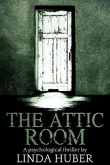
Текст книги "The Forgotten Room"
Автор книги: Lincoln Child
Жанр:
Триллеры
сообщить о нарушении
Текущая страница: 1 (всего у книги 19 страниц)
Lincoln Child
The Forgotten Room
For Veronica
1
It was perhaps the most unusual sight ever beheld on the august and stately grounds of the Glasgow Institute of Science, founded in 1761 by grant of charter from George III. A large podium, studded with microphones, had been erected on the Great Lawn, directly in front of the administration building. Before it had been set some three dozen folding chairs, on which sat reporters from local newspapers, the Times of London, Nature, Oceanography, Time magazine, and a host of others. To the right of the podium were two television cameras, one from the BBC and the other from CNN. To the podium’s left was a large wooden scaffold, upon which sat a large, strange-looking machine of dark metal: a cross between a cigar tube and a pincushion, about thirty feet long, with a bulky attachment protruding from its upper edge.
The restless chatter among the reporters grew muted as the main doors to the administration building opened and two men stepped out into the September afternoon sunlight. One was plump and short, with a shock of white hair and wearing a thick tweed coat. The other was tall and quite thin, with rather severe features, light brown hair, and alert gray eyes. Unlike the first man, he was dressed in a conservative dark suit.
The two approached the podium and the older man cleared his throat. “Ladies and gentlemen of the press,” he began, “thank you for coming. I am Colin Reed, provost of the Glasgow Institute of Science, and to my right is Jeremy Logan.”
Reed took a sip from a glass of water on one side of the podium, cleared his throat again. “You may well know of Dr. Logan’s work. He is perhaps the only, and certainly the preeminent, enigmalogist operating in the world today. His job is to investigate, interpret, and explain the – for lack of a better word – unexplainable. He throws light upon riddles of history; he separates myth from truth and the natural from the supernatural.”
At Reed’s side, Jeremy Logan frowned slightly, as if uncomfortable at this bit of panegyric.
“About two months ago, we contacted Dr. Logan on his home ground of Yale University and asked him to undertake an assignment for us. That assignment can be briefly explained: to definitively prove, or disprove, the existence of the creature popularly referred to as the Loch Ness monster. Dr. Logan has spent the last six weeks in Inverness, doing precisely that. I will now ask him to share his findings with you.”
Reed stepped back from the microphones and Logan approached. He surveyed the crowd of reporters for a moment, then began to speak. His voice was relatively low and mild, the mid-Atlantic accent contrasting with Reed’s Scottish burr.
“The Loch Ness monster,” he began, “is the most famous of all the supposed Scottish lake monsters, perhaps the most famous of all cryptids. The institute’s aim in hiring me for this particular task was not to stunt the local tourism industry or to put peddlers of Loch Ness iconography out of business. Rather, it was to put a stop to the amateur and misguided attempts at searching for the creature – attempts that have been on the increase recently and, at least twice in the last year, have resulted in deaths by drowning.”
He took a sip from his own water glass. “I quickly realized that proving the existence of the creature required only one thing – observing it in its element. Proving that the creature does not exist, however, would require a great deal more work. Technology would be my greatest ally. Hence I persuaded the United States Navy, of which I was once a part, to lend me this one-man research submersible.” And Logan waved at the strange-looking machine sitting on the wooden scaffold to his right. “The submersible is equipped with continuous-wave radar, synthetic aperture sonar, pulse-compression echolocating devices, and numerous other technologies for both underwater mapping and target acquisition.
“There were two important factors to take into account. First, the Loch is quite long and unusually deep – seven hundred and fifty feet in places. Second, so-called sightings of the creature suggested a morphology similar to a plesiosaur, which would put it at something between twenty and forty feet in length. There were several unknown variables to contend with, of course, such as the creature’s range of movement and environmental preferences, but these could not be determined until such time as it was located.
“I began by familiarizing myself with the features of the submersible and the layout of the loch – both above and below the surface. My service in the navy made the former relatively straightforward. I spent one week in this shakedown period, during which time I uncovered no sign of the creature.
“Next, I had the institute procure for me some netting – rather a lot of netting, in fact. Using spools of military-grade nylon mesh, we put together a net ten thousand feet by eight hundred feet.”
This brought murmurs of surprise.
“What came next was rather tedious but – after the first few run-throughs – quite straightforward. I was lucky in the fact that the loch, although some twenty miles long, is not particularly wide: just under two miles at its widest point. We started at the northernmost point of the loch and worked south. My work was aided by two research assistants from the institute and two motor launches out of Inverness. Each day, using the submersible, I would comb an area of the loch consisting of a single mile in a southerly direction. A mile-long slice of the loch, as it were, along the x, y, and z axes. For each of these discrete slices, I would make three separate passes at different depths, using the submersible’s movement and targeting technologies to search for any objects the size of the creature. This equipment has significant range and precision; had any object of the requisite size been in the slice, I would have located it. At the end of each day, with the help of the research assistants – one on each shore of the loch – and the two boats on the loch itself, I moved the netting one mile forward, to the terminal point of my search for that day. This vast mesh covered the entire loch laterally, like an antisubmarine net. The mesh was broad enough for any normal fish to swim through without difficulty, but narrow enough to prevent anything larger than forty centimeters wide from passing. Watercraft were dealt with on a one-by-one basis.
“Each day I explored an additional one-mile slice of the loch, searching for the creature. At the end of each day, as mentioned, we pulled the net forward another mile. After twenty days we reached the southern end of the loch – without result. And so, ladies and gentlemen, you can take as fact the four words I’m about to speak – though I speak them with some regret, since I enjoy cryptozoological legends as much as the next man: There ain’t no Nessie.”
This was greeted with applause, a scattering of laugher.
A low sound became audible in the distance: a droning, repetitive thudding. As the sound drew closer, it became identifiable as helicopter blades cutting through the air. Then a fat chopper with military markings appeared over a nearby hilltop lined with redbrick row houses. It approached quickly now – an American navy aircraft – then descended, hovering directly over the Great Lawn and the dark gray submersible. Grass flattened out in a circular direction, and the reporters were forced to grab hats and papers to prevent them from flying. A technician in a jumpsuit trotted out a side door of the administration building, climbed up the wooden scaffolding, and attached two huge hooks that had been reeled out of the helicopter’s belly onto fastenings on the upper surface of the submersible. He crawled back down, gave a thumbs-up, and the helicopter began to rise gingerly, the craft swaying beneath it. Higher and higher it climbed, and then it turned slowly and began heading eastward, its peculiar cargo trailing behind it by the two lifelines. Within sixty seconds it was gone. The entire operation had taken less than five minutes.
Logan watched the distant horizon for a moment, then turned back to the press. “And now,” he said, “I would be happy to answer your questions as fully as I can.”
* * *
Three hours later, in the snug of the Edwardian-era bar within Glasgow’s most opulent hotel, the same two persons – Colin Reed and Jeremy Logan – toasted each other over glasses of a peaty single-malt scotch, served neat.
“An excellent performance,” Reed was saying. “And I don’t just mean at the press conference today – an excellent performance from beginning to end.”
“Acting is new to me,” Logan replied. “But it’s nice to know that, if the ghost-hunting business ever dries up, I can always supplement my Yale salary by treading the boards.”
“ ‘I would be happy to answer your questions as fully as I can,’ ” Reed said, chuckling at the memory. “Nice bit of prevarication, that.” He took a sip of his scotch. “Well, I think we can safely say that with today’s announcement – in addition to the new rules that have been instituted regarding use of watercraft in the loch – all this hunting for the monster will die off.”
“That’s the plan.”
Reed started, as if forgetting something. “Oh, yes.” He reached into his pocket, pulled out a slender envelope. “Here’s your stipend.”
“I still feel bad taking money from the institute,” Logan said as he pocketed the envelope. “But I console myself with the thought that it’s recompense for the damage my reputation would suffer should the truth ever become known.”
“We thank you – and, more important, I’m sure Nessie thanks you.” The provost paused. “You have the, ah, data with you?”
Logan nodded.
“And you still believe the best thing is to destroy it?”
“It’s the only option. What if those images got into the open – or, God forbid, went viral on the Internet? It would undo everything we’ve accomplished. I’ll burn them as soon as I get up to my room.”
“You’re right, of course.” Reed hesitated. “May I…may I have one last look?”
“Of course.” Logan glanced around the bar, then unlocked the Zero Halliburton attaché case that sat on the banquette beside him, extracted a folder, and passed it to Reed. The man took it, opened it, and leafed through the pages within, his eyes glittering with hungry fascination.
The pages contained images produced from a variety of technologies: acoustic backscatter, synthetic aperture pulse, active beam-forming sonar. The images all showed the same thing, in different positions and from different angles: a creature with a bulky, ovoid body; lateral fins; and a long, slender neck. Reed lingered over the images for a moment. Then, with a rueful sigh, he closed the folder and passed it back to Logan.
Just as Logan was returning it to his attaché case, a man in the hotel’s uniform walked up to their table. “Dr. Logan?” he asked.
Logan nodded.
“There’s a call for you. It’s waiting at the front desk.”
Logan frowned. “I’m in the middle of a meeting. Can’t it wait?”
The man shook his head. “No, sir. I’m afraid the party on the line said that the matter was urgent. Most urgent.”
2
Approaching from the west along Rhode Island’s Route 138, the Jamestown Verrazzano Bridge was a four-lane, concrete box girder affair of a pleasing – if rather alarmingly pitched – design. It was midday, out of season; traffic was fairly light; and Dr. Jeremy Logan prodded the accelerator of his ’68 Lotus Elan just a little. The coupe obliged, rising effortlessly up and over the span. A narrow nubbin of land shot by beneath, and then a second bridge appeared ahead: the Claiborne Pell. This bridge was both much longer and much taller. Logan knew just enough about structural engineering to find suspension bridges faintly disquieting, and he pushed a little harder on the gas pedal. The car climbed; he topped the apex of the span – and then the view ahead and below drove all thoughts of resonant frequencies from his mind.
Newport, Rhode Island, lay before him, jewel-like and sparkling in the early autumn sun, like Oz at the end of the yellow brick road. Coves, marinas, harbors, wharves, and gleaming buildings dressed in stone or white-painted clapboard – barely discernible at this distance – stretched out to the left and right. In the middle distance, a handful of sloops and catboats coursed through the water, heeled over by the wind, their white sails taut and full. It was a sight that never grew old, and Logan drank it in.
It was almost enough to make him forget the nagging mystery of why, exactly, he was here.
At the end of the bridge he turned right onto Farewell Street, then cut through the narrow, traffic-heavy lanes of the old downtown until he reached Memorial Boulevard. Like all tourists, he turned first left, then right onto Bellevue. But then, instead of veering off to the east – toward the Cliff Walk and the impeccably manicured facades of such “cottages” as Marble House or the Breakers – Logan made his way south and west until he reached Ocean Avenue. He passed a series of small beaches, a country club, the inevitable summer mansions. And then, some two miles on, he slowed before a narrow road of paved stone that led south from the main thoroughfare, with no other name than PRIVATE fixed to its road sign. He turned onto the lane. A hundred yards on he reached a tall wall of weathered brick, leading off to each side as far as the eye could see. Directly ahead was a gate in the wall, and a quaint slate-roofed structure that served as a security station. Logan stopped to show some papers; the guard within the station glanced at them, nodded, and passed them back; the gate across the road lifted and, with a wave, Logan drove on.
The narrow, winding road passed through a tiny wood, over one low rise of land, and then another. And then, rounding a corner, Logan stopped as he caught his first glimpse of Lux in almost ten years.
It was even larger than he remembered. Modeled after England’s Knebworth House, but on an even grander scale, the sand-colored structure stretched away on both sides for what seemed leagues before terminating in East and West Wings. An odd mélange of Jacobean, Palladian, and high Gothic, leaded-glass windows winking in the sun, the mansion seemed even more Oz-like than Logan’s initial impression of Newport – save for the fact that the dark veins of ivy covering the facade; the oddly hooded, watchful appearance of the gables and turrets; and the low crenelations that ran along its roof as if in readiness for battle gave the building an appearance that was faintly sinister. No – that was too strong a word. “Disquieting,” Logan had termed it upon first sight, and he settled on that term again now. The high brick wall he had passed through could be seen far away on both sides, running up and down with the vagaries of the grassy terrain, and terminating on both sides at the steep, rocky cliffs above the Atlantic. Scattered around the flanks of the main structure were at least a dozen outbuildings of various shapes and sizes: a power plant, greenhouse, storage facilities, and a series of windowless structures that Logan knew to be laboratories, together forming a campus comprising almost a hundred acres.
Easing the car ahead now, he drove up the lane to a parking area on the near side of the East Wing – the front entrance, with its four massive Solomonic columns supporting a marble pediment, was much too grand to actually be used for anything save decoration – got out of his car, and walked down a short tree-lined sidewalk to a set of double doors. Only here, screwed into the facade on a weather-darkened panel of bronze, did the place allow itself to be named: LUX.
To one side of the doors were several devices: a numeric keypad, an intercom with a buzzer, and another technologic gadget Logan couldn’t identify. A printed sign above all three announced RESIDENTS AND GUESTS: USE KEYPAD AFTER HOURS. Logan was neither, and since it was noon, he pressed the buzzer.
After a moment, a woman’s voice rasped through the speaker. “Yes?”
“Dr. Jeremy Logan,” Logan said, leaning in toward the microphone.
A brief delay. “Please come in.”
There was a buzz; the doors sprang open; and Logan entered. Ahead lay the long, broad corridor he remembered. It quite clearly conveyed the double uses of the vast mansion. While the walls and ceilings were trimmed with elegant, almost rococo molding – implying the palatial abode of some robber baron of a previous century – the book-covered tables, heavily used wall-to-wall carpeting, door signs, and conspicuous red exit signs bespoke its second and quite different purpose.
Logan walked about ten yards down the hall, then turned in at the door marked RECEPTION. Telephones rang, and fingers tapped busily on keyboards. And yet there was a strange, subdued feeling in the air that Logan was immediately aware of: something that, for him, cut like a knife through the normal, professional tone of a busy office at work.
A woman was seated behind a long desk, and she watched him enter. “Dr. Logan?” she asked.
“That’s right.”
“I’ve notified the director. He’ll be down in just a moment.”
Logan nodded. “Thank you.”
He looked around at the leather-upholstered wing chairs and sofas that made up the waiting room, decided on one, and was about to take a seat when the familiar form of Gregory Olafson appeared in the reception doorway. He was older, of course – his thick black hair had turned pure white, and there were wrinkles around his eyes that had once been merely laugh lines – but something other than years had aged his face. He smiled at the sight of Logan, but it was a brief smile, quickly gone.
“Jeremy,” he said, walking forward and taking Logan’s hand. “Good to see you again.”
“Gregory,” Logan replied.
“I know you must be wondering what this is all about. Come with me, please – I’ll explain everything in my office.” And he led the way out of the room and into the main hallway, Logan following.
3
Olafson’s office was much as Logan remembered it. Dark, Edwardian-era wood panels, polished brass fixtures, and the anachronistic scribbly paintings hanging on the walls – Olaf son favored abstract expressionism. Along one wall, tall, thickly framed windows afforded a view of the well-tended landscape: greenery that swept down southward toward the rocky cliffs overlooking an angry ocean. The lower sashes of the leaded windows were slightly raised, and Logan was aware of both the distant crash of waves and the briny odor of the sea.
The director motioned Logan toward a chair, then took a seat beside him. “I appreciate your coming so quickly.”
“You said the matter was urgent.”
“And so I think it is. But I’d be hard-pressed to tell you precisely why. That’s…” Olafson hesitated a moment. “That’s where you come in. I wanted to secure your services before another assignment came up.”
The room fell silent for a long moment as the two men looked at each other. “Before I say anything more,” Olafson continued at last, “I need to know that you can put aside any prejudice, any ill will, that might have been caused by – ah – past differences.”
This prompted another silence. From his armchair, Logan regarded the director of Lux. He’d been sitting in this same seat the last time he spoke to Olafson, a decade earlier. It had been about this time of year, as well. And the director had worn the same expression on his face: at once both anxious and eager. Fragments of Olafson’s short speech came back to Logan now, filtered through a veil of time and memory: Certain members are rather concerned…perceived lack of academic rigor…the good of the nation’s oldest and most prestigious policy institute must come first….
Logan shifted in his chair. “It won’t be a problem.”
The director nodded. “And I can be assured of your complete discretion? Much of what I’m going to tell you is secret, even from the faculty, Fellows, and staff.”
“That’s part of my job. You shouldn’t even have to ask.”
“Ah, but I had to, you see. Thank you.” Olafson glanced briefly out at the sea before returning his attention to Logan. “Do you remember Dr. Strachey?”
Logan thought a moment. “Willard Strachey?”
Olafson nodded.
“He’s a computer scientist, right?”
“That’s right. Strachey was recently at the center of a…very tragic event that took place here at Lux.”
Logan recalled the atmosphere he’d sensed during his brief wait in the reception area. “Tell me about it.”
The director glanced seaward again before answering. “Strachey hadn’t been himself for the last week or two.”
“Can you be more specific?” Logan asked.
“Restless. Apparently not sleeping, or sleeping very little. Irritable – which if you have any recollection of him, you’ll know was completely out of character. And he…” Olafson hesitated again. “He’d begun talking to himself.”
“Indeed?”
“So I’ve been told. Under his breath but extensively, sometimes even animatedly. Then, just three days ago, he experienced a sudden breakdown.”
“Go on,” Logan said.
“He became violent, began assaulting his assistant.” Olafson swallowed. “As you know, we have only a skeletal security force here – we really aren’t equipped to handle any…well, scenes of that sort. We restrained him as best we could, locked him in the visitors’ library on the first floor. And then we called nine one one.”
Logan waited for the director to continue. But instead, Olafson stood up, walked to one wall, and pulled away a decorative curtain, revealing a projection screen. Then he opened a drawer in the same wall, took out a digital projector, and plugged it in, aiming it at the screen.
“It would be easier – for you, and certainly for me – if you just saw for yourself,” he said. Then he moved toward the door, flicked off the lights, and turned the projector on.
At first, the screen was black. Then a series of numbers scrolled quickly up its face. And then an image appeared, black-and-white, slightly grainy at this level of magnification: the video feed from a security camera. A date and time stamp ran continuously along the lower edge of the frame. Logan recognized the room. It was, as Olafson had said, the Lux visitors’ library: an ornate space with elaborate sconces and a coffered ceiling. Three of the walls were lined floor to ceiling with books; the fourth wall contained several very tall windows of the same heavy sash construction as those in Olafson’s office. Armchairs, ottomans, and banquettes were arranged around the gracious space. It was not a working library – that was elsewhere in the mansion, and much more fully stocked – but was instead meant to impress guests and potential clients.
From the bird’s-eye perspective of the security camera, Logan could make out a man pacing back and forth over the expensive carpeting, clearly afflicted by extreme agitation. He plucked at his clothes, pulled his hair. Logan recognized him as a decade-older version of Dr. Strachey, perhaps sixty or sixty-five years of age. Now and then the scientist stopped and bent forward, clapping his hands over his ears as if to block out some unbearable sound.
“We put him in there,” Olafson said, “so that he wouldn’t harm himself or anyone else until help could arrive.”
As Logan watched, Strachey went up to the door and yanked at it violently, crying out as he did so.
“What’s he saying?” Logan asked.
“I don’t know,” Olafson replied. “Raving, I’m afraid. The audio quality is poor – only a few of our security cameras even have integrated microphones.”
Now Strachey’s agitation increased. He pounded the walls, yanked books from their shelves and threw them across the room. Again and again he stopped and covered his ears, shaking his head like a dog shaking a rat. He approached the windows and beat them with his fists, but the leaded glass was too thick to be easily broken. He began to stagger, flailing, almost as if blind, running into walls, turning over tables. He stumbled in the direction of the camera and, for a brief moment, his voice became clearer. Then he turned away again, panting raggedly, looking around. And then, suddenly, he grew calm.
From the corner of his eye, Logan saw Olafson turn away. “I must warn you, Jeremy – I’m afraid this part is terribly disturbing.”
Under the gaze of the camera, Logan watched Strachey move toward the wall of windows. He walked slowly at first, then more quickly and confidently. Coming up to the closest window, he tried to raise it. The heavy, old-fashioned sash rose only a few inches.
Strachey went to the next window, tugged at it with sharp, violent motions. It, too, went up just an inch or two. The old-fashioned, metal-trimmed window sashes were very heavy to begin with, Logan knew, and they probably hadn’t been cleaned and oiled in decades.
Now Strachey approached a third window; tugged again. This one rose more easily than the others had. Logan watched as Strachey pushed the sash up farther, first using both hands, then applying a shoulder. Logan could hear the grunts of effort. Finally, Strachey managed to raise the window sash to its maximum height: almost five feet above the lower sill.
There was no screen; the library was on the first floor of the building; the yawning window frame gave Strachey easy access to liberty. In another minute, he’d be through the open window and gone. What, Logan wondered, was the tragedy in one scientist gone rogue?
Except that Strachey did not go out of the window. Instead, he bent low before it, reaching in toward the right edge, fiddling with something in the groove of the frame. It was, Logan realized, the window’s sash chain. He peered in at the screen, mystified. With one hand, Strachey now held the sash chain; with the other hand, he was performing some kind of twisting motion on an object that his body blocked from view.
Then the hand pulled away. In it was an iron sash weight, about ten inches long and obviously heavy. Strachey had detached the sash weight from the window chain. He let the weight drop to the floor. His other hand still held tight to the sash chain. Only Strachey’s grasp on the chain now kept the window from crashing downward.
Suddenly, a terrible dread flooded through Logan.
Still holding tight to the chain, Strachey knelt in front of the window and rested his neck on the sill. There was a moment of stasis in which Logan, frozen in his seat, heard the man draw in several ragged breaths.
And then Strachey let go of the chain.
With a sharp screech like the whistle of a train, the heavy metal sash came hurtling down in its casing. There was a terrible crack of bone, audible even over the rattling of the window; Strachey’s body jerked as if touched by a live wire. Logan looked quickly away, but not before seeing the head go tumbling down into the flower beds outside the library, and the heavy flood of blood running dead black in the pitiless eye of the security camera.








